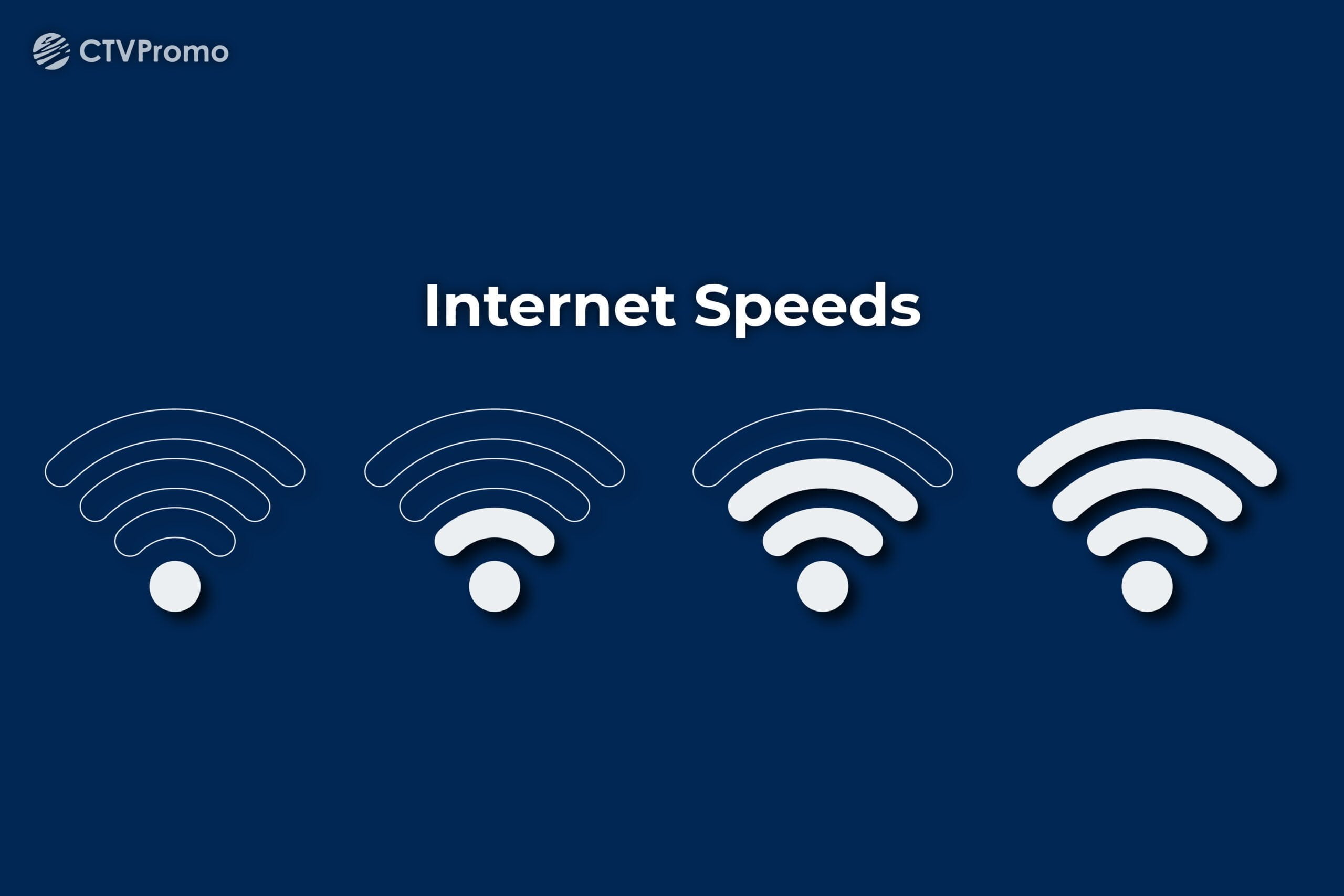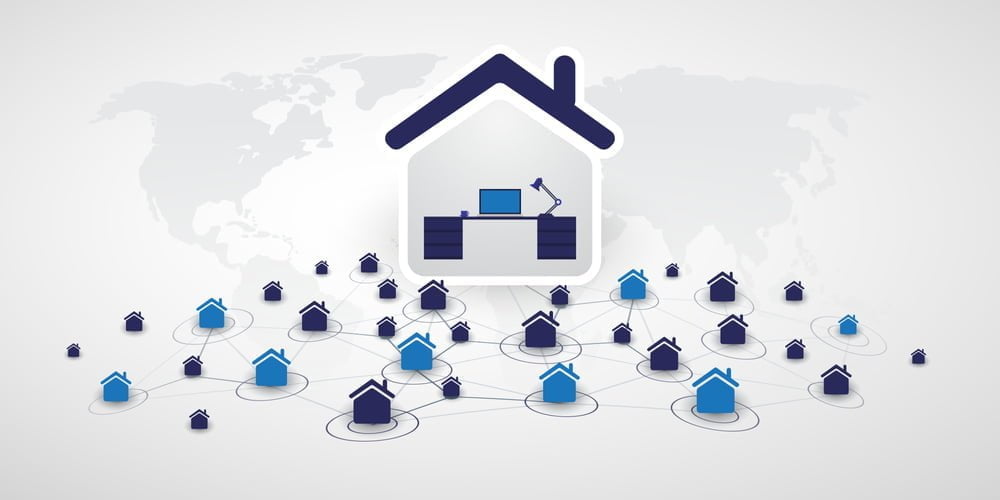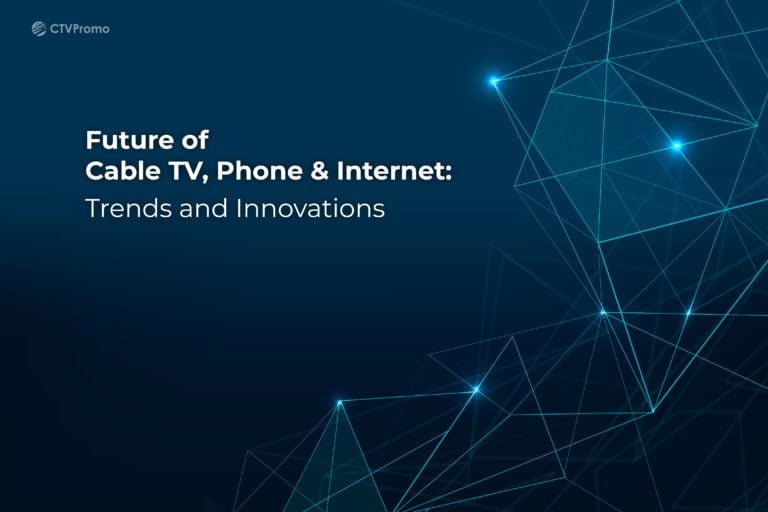On This Page
Home » Blog » Understanding Different Internet Speeds and Choosing the Right Plan for Your Needs
Understanding Different Internet Speeds and Choosing the Right Plan for Your Needs

Are you tired of slow internet speeds that hinder your online experience?
Understanding different internet speeds and choosing the right plan for your needs is crucial in today’s digital age.
In this comprehensive guide, we will explore the various internet speeds available and will discuss the common needs of users from homes, businesses, and elsewhere. We will also provide you with detailed tips on selecting the perfect plan for your requirements.
Whether you’re streaming, gaming, or running a business, finding the right internet speed is essential.
So, let’s dive in and uncover the world of internet speeds!
Internet Speeds: A Brief Overview
Before we delve into the specifics, let’s start by understanding the different internet speeds available.
Internet service providers (ISPs) offer various speed options, typically measured in megabits per second (Mbps). The speed determines how quickly data can be transmitted between your device and the internet.
Here are the commonly available internet speeds:
Dial-Up Internet Speeds
Dial-up was popular in the early days of the Internet but is now considered outdated.
With dial-up, speeds range from a snail-paced 56 Kbps (kilobits per second) to a maximum of 128 Kbps. Its slow connection makes it impractical for most modern internet activities.
DSL Internet Speeds
Digital Subscriber Line (DSL) is a broadband technology that delivers internet over existing telephone lines.
DSL speeds typically range from 1 Mbps to 100 Mbps, offering faster connections compared to dial-up. However, DSL speeds can vary based on your distance from the provider’s central office.
Cable Internet Speeds –
Cable internet utilizes the same coaxial cables as cable television to transmit data.
With cable, speeds can range from 10 Mbps to over 1 Gbps (gigabit per second). Cable internet provides faster speeds and is widely available in urban areas.
Fiber Optic Internet Speeds
Fiber optic internet is the fastest and most reliable type of internet connection available.
It uses light signals transmitted through thin glass or plastic fibers to deliver data at incredible speeds. Fiber optic speeds can reach up to 1 Gbps or even 10 Gbps, enabling lightning-fast downloads, seamless streaming, and lag-free online gaming.
Satellite Internet Speeds
Satellite internet is an option for users in remote or rural areas where other types of internet connections may be limited.
Speeds can range from 12 Mbps to 100 Mbps. While satellite internet offers broader coverage, it can suffer from higher latency due to the long distance data must travel to and from satellites in space.
Common Internet Needs for Homes, Businesses, and More –
Now that we have a basic understanding of the different internet speeds available, let’s explore the common needs of various users. Internet requirements can vary based on different settings, such as homes, businesses, and other scenarios.
Here’s a table showcasing different internet needs, their corresponding internet usage, and the recommended internet speeds:
| Internet Need | Internet Usage | Recommended Internet Speeds |
| Basic Browsing | Web browsing, email | 10-25 Mbps |
| Video Streaming | Standard Definition (SD) | 3-5 Mbps |
| High definition (HD) | 5-10 Mbps | |
| 4K Ultra HD | 25 Mbps or more | |
| Online Gaming | Casual gaming | 3-6 Mbps |
| Multiplayer gaming | 10 Mbps or more | |
| Video Conferencing | Video calls, virtual meetings | 3-10 Mbps |
| File Downloads/Uploads | Large files, cloud storage | 25 Mbps or more |
| Home Office Usage | Remote work, VPN | 25 Mbps or more |
| Smart Home Devices | Connected devices, automation | 25 Mbps or more |
| Multiple Users/Devices | Simultaneous usage | 50 Mbps or more |

Let’s take a closer look at each:
Internet Needs for Homes
When it comes to homes, internet speeds play a crucial role in meeting the diverse needs of individuals and families. Here are some common internet needs for residential users:
- Web Browsing and Email: Basic web browsing and email activities require minimal internet speeds. Speeds ranging from 1 Mbps to 10 Mbps are generally sufficient for these tasks.
- Streaming Entertainment: With the rise of streaming services like Netflix, Hulu, and YouTube, many households rely on high-speed internet for uninterrupted video streaming. For standard definition (SD) streaming, speeds around 3-5 Mbps are recommended, while high definition (HD) streaming typically requires speeds of 5-10 Mbps. For 4K Ultra HD streaming, higher speeds of 25 Mbps or more may be necessary to ensure a smooth viewing experience.
- Online Gaming: Gamers require low latency and fast internet speeds to enjoy a seamless gaming experience. Speeds of at least 10-25 Mbps are generally recommended for online gaming, although competitive gamers may prefer even faster connections to minimize lag.
- Smart Home Devices: The increasing popularity of smart home devices, such as voice assistants, smart thermostats, and security systems, relies on a stable and reliable internet connection. While these devices do not typically require high speeds individually, having a robust internet plan is important to support multiple devices simultaneously.
Internet Needs for Businesses
Businesses have unique internet requirements to cater to their operational needs, communication, and online presence.
Here are some common internet needs for businesses:
- Email and Communication: Reliable email communication is essential for businesses of all sizes. Basic internet speeds of 10 Mbps or higher should be sufficient for handling email and other communication platforms.
- Cloud Services and File Sharing: Many businesses rely on cloud services for data storage, collaboration, and file sharing. Faster internet speeds, such as 25-100 Mbps, are recommended to ensure quick and efficient access to cloud-based applications.
- Video Conferencing: With the increasing prevalence of remote work and virtual meetings, video conferencing has become a crucial aspect of business communication. Stable internet speeds of at least 25-50 Mbps are recommended for seamless video conferencing experiences without interruptions or pixelation.
- E-commerce and Online Transactions: Businesses engaged in e-commerce or online transactions require secure and fast internet connections to process transactions, manage inventory, and provide a smooth shopping experience for customers. Speeds of 50 Mbps or higher are generally recommended to handle the demands of online transactions effectively.
Internet Needs in Other Industries
Apart from homes and businesses, there are other scenarios where internet speeds play a vital role.
Let’s explore a few additional situations:
- Education: As online learning continues to gain prominence, students and educators rely on fast and stable internet connections for accessing educational resources, participating in virtual classrooms, and submitting assignments. Internet speeds of 10-25 Mbps are generally sufficient for most educational activities.
- Public Wi-Fi: Public spaces such as cafes, libraries, and airports often provide Wi-Fi access to visitors. To ensure a satisfactory experience for multiple users simultaneously, public Wi-Fi networks should have speeds of at least 10-25 Mbps or higher, depending on the expected usage volume.
- Remote Locations and Travel: Travelers and those residing in remote locations may encounter limited internet options. Satellite internet or cellular data connections can provide internet access in such areas, but speeds may vary. It’s essential to check coverage maps and consult with local providers to determine the available speeds.
Now that we’ve explored the different internet needs across various settings, let’s move on to the next important aspect!

How to Choose the Right Plan for Your Needs?
Choosing the right internet plan can be overwhelming with the multitude of options available.
To ensure you select a plan that meets your specific requirements, consider the following factors:
Tip #1: Determine Your Internet Usage
Start by assessing your typical internet usage.
Do you mainly use the internet for basic browsing and email, or do you engage in activities like streaming gaming, or video conferencing? Understanding your usage patterns will help you determine the minimum speed you require.
Tip #2: Check Available Providers
Research the internet service providers (ISPs) in your area and compare their plans.
Look for well-established providers like AT&T as they often offer a range of plans to choose from.
| Provider | Speeds Offered |
| AT&T Internet Speeds | 10 Mbps, 100 Mbps, 300 Mbps, 1 Gbps |
Tip #3: Compare Speeds and Prices
Consider the available internet speeds and their corresponding prices.
Determine whether the speeds offered by a particular plan align with your usage needs. It’s important to strike a balance between speed and affordability.
Tip #4: Read Customer Reviews
Look for reviews and feedback from customers who have used the ISP and plan you are considering. Pay attention to factors such as reliability, customer support, and consistency of speeds.
Tip #5: Understand Data Caps and Bandwidth
Some internet plans come with data caps or limitations on the amount of data you can use within a specific period. Evaluate your data usage requirements and choose a plan that offers sufficient bandwidth to avoid excessive charges or speed throttling.
Tip #6: Consider Contract Terms
Determine whether you prefer a contract or no-contract plan.
Contracts often offer promotional pricing for a fixed duration, but they may come with early termination fees if you decide to switch providers before the contract period ends. No-contract plans provide flexibility but may have higher monthly costs.
Tip #7: Bundle Options
If you require additional services such as cable TV or phone, explore bundle options offered by ISPs. Bundling services can often lead to cost savings.
Tip #8: Availability of Customer Support
Ensure that the ISP offers reliable customer support to address any issues or concerns promptly. Look for 24/7 customer support channels, such as phone, chat, or email.
Tip #8: Consider Future Growth
Anticipate your future needs. If you plan to add more devices or expand your online activities, opt for a plan that provides headroom for growth, ensuring you won’t outgrow your internet speeds quickly.
By considering these factors and conducting thorough research, you can make an informed decision and choose an internet plan that aligns with your needs and budget.
Choosing the right internet plan is crucial to meet your specific needs, whether you’re using it for your home, business, or elsewhere.
By understanding the different internet speeds available and considering factors such as usage requirements, available providers, speeds, prices, customer reviews, and future growth, you can make an informed decision.
Remember to explore the secondary keywords related to internet speeds, such as AT&T internet speeds, and others, to find plans that cater to your needs.
Take your time to research and compare different plans before making a final decision.
With the right internet plan, you can enjoy a seamless online experience that aligns with your needs and preferences.
Frequently Asked Questions (FAQs)
What are good internet speeds for streaming?
- For standard definition (SD) streaming, speeds of 3-5 Mbps are sufficient.
- For high definition (HD) streaming, aim for speeds of 5-10 Mbps.
- For 4K Ultra HD streaming, higher speeds of 25 Mbps or more are recommended.
Is 200 Mbps fast enough for Netflix?
Yes, 200 Mbps is more than sufficient for streaming Netflix. With a speed of 200 Mbps, you can easily stream Netflix in high definition (HD) without any buffering or lag.
Which internet providers offer fast speeds for gaming?
Providers such as AT&T, offer internet plans with speeds suitable for online gaming.
Are there any data caps or limitations on internet plans?
Some plans come with data caps, restricting the amount of data you can use within a specific period. Be sure to check the plan details for any such limitations.
What are the advantages of fiber optic internet?
Fiber optic internet offers incredibly fast speeds, low latency, and high reliability, making it ideal for demanding activities like streaming, gaming, and large file transfers.
Can I switch internet providers if I’m not satisfied with my current plan?
Yes, you can switch internet providers if you’re not satisfied with your current plan. However, you should check if there are any contract terms or early termination fees associated with your existing plan.
What factors can affect my actual internet speeds?
Several factors can impact your actual internet speeds, including network congestion, distance from the ISP’s infrastructure, hardware limitations, and Wi-Fi interference. It’s important to consider these factors when assessing the expected speeds.
People also read
-
 10 Tips for Improving Your Internet Speed and PerformanceJune 19, 2023/0 Comments
10 Tips for Improving Your Internet Speed and PerformanceJune 19, 2023/0 Comments -

-
 Exploring the Benefits of Unlimited Data PlansJune 22, 2023/
Exploring the Benefits of Unlimited Data PlansJune 22, 2023/ -

-

-

-

-

-













